How does the Zip line work?
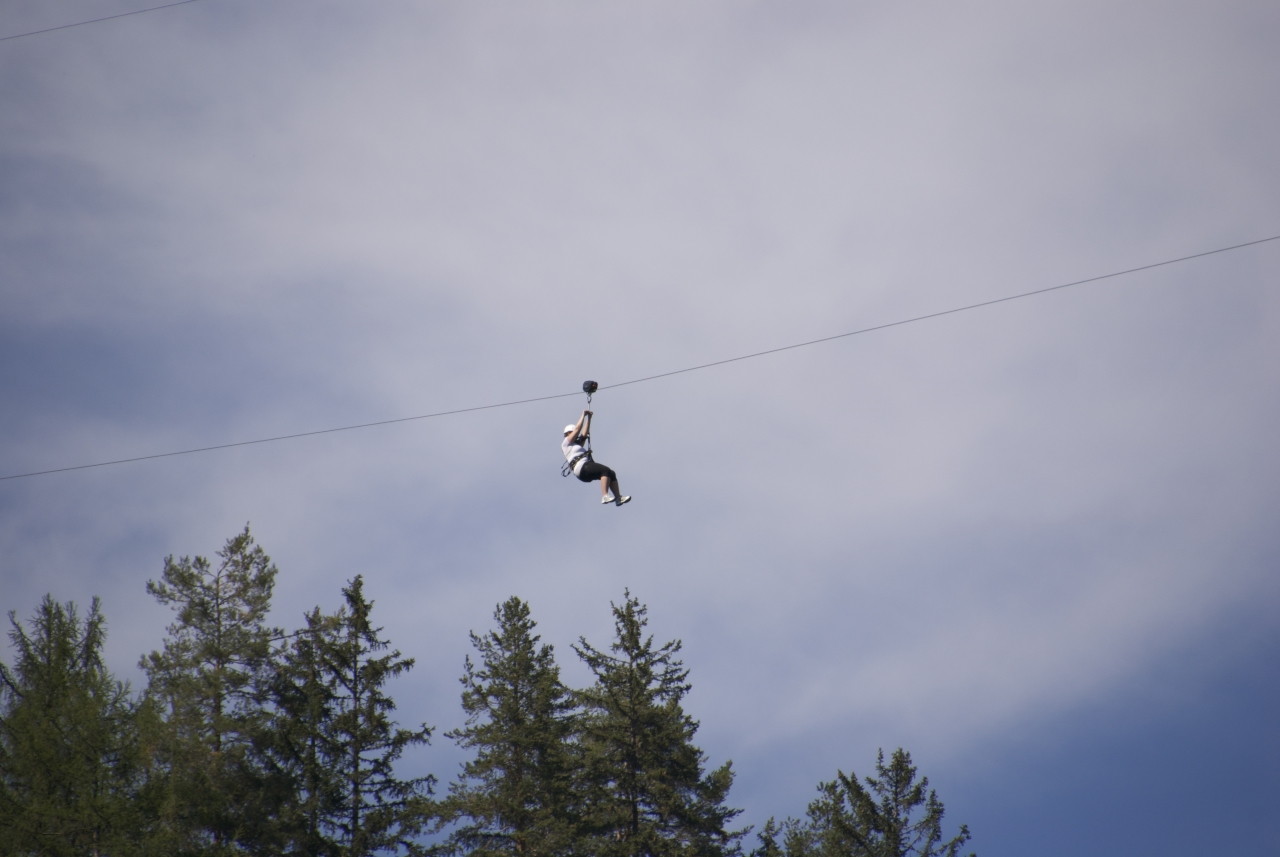
The zip line, also called the ‘tyrolean’ or ‘hanging cable’, is an attraction consisting of a long steel rope stretched between two points, usually over steep terrain.
To use it, a person wears a harness connected to the rope via a pulley, which slides down the rope in gravity. The person then jumps from a platform or elevated point and slides down the rope, achieving considerable speed.
The zip line works on the basis of the law of gravity and friction. When a person throws himself along the rope, gravity pushes down, creating a kinetic force that propels the person forward. The friction between the pulley and the rope slows the person down to a stop.
History
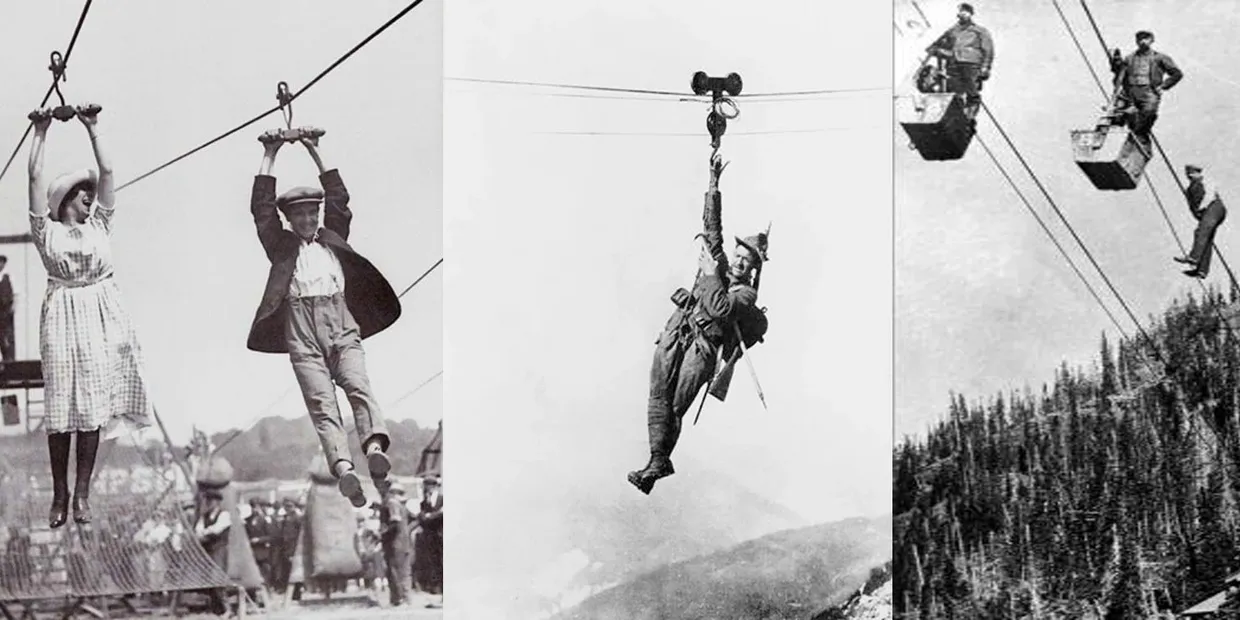
The first ziplines date back hundreds of years and were used as a means of transport in the mountains to move goods and people from one area to another. The first ziplines are said to have been invented by the inhabitants of the mountainous areas of the Himalayas and Andes. These early ziplines were made of woven ropes tied between two points, with a seat or platform where the person or goods could be placed and then transported across the rope.
The zip line has ancient roots and different versions of its invention have been developed in many parts of the world. However, the modern zip line is believed to have been invented in the early 1900s, in the southeastern United States.
The first zip line, called the ‘Flying Fox’, was developed in 1907 by an American engineer named H.F. Howes. Howes designed his zip line to cross a river at high speed, using a steel cable suspended between two towers. Howes’ zip line soon became a popular tourist attraction and was also used by workers to cross rivers and canyons more efficiently.
In the 1960s, the zip line was introduced in New Zealand as a way to reach some of the remote and hard-to-reach areas of the rainforests. It was in this context that the first safety harness and pulleys specially designed for the zip line were developed.
In the following years, the zip line spread all over the world as a tourist attraction and as an outdoor sporting activity. Today, the zip line has become a popular attraction for tourists in many destinations, from rainforests to cities. It is also used by the military and rescue workers in emergency situations or difficult access.
100% security
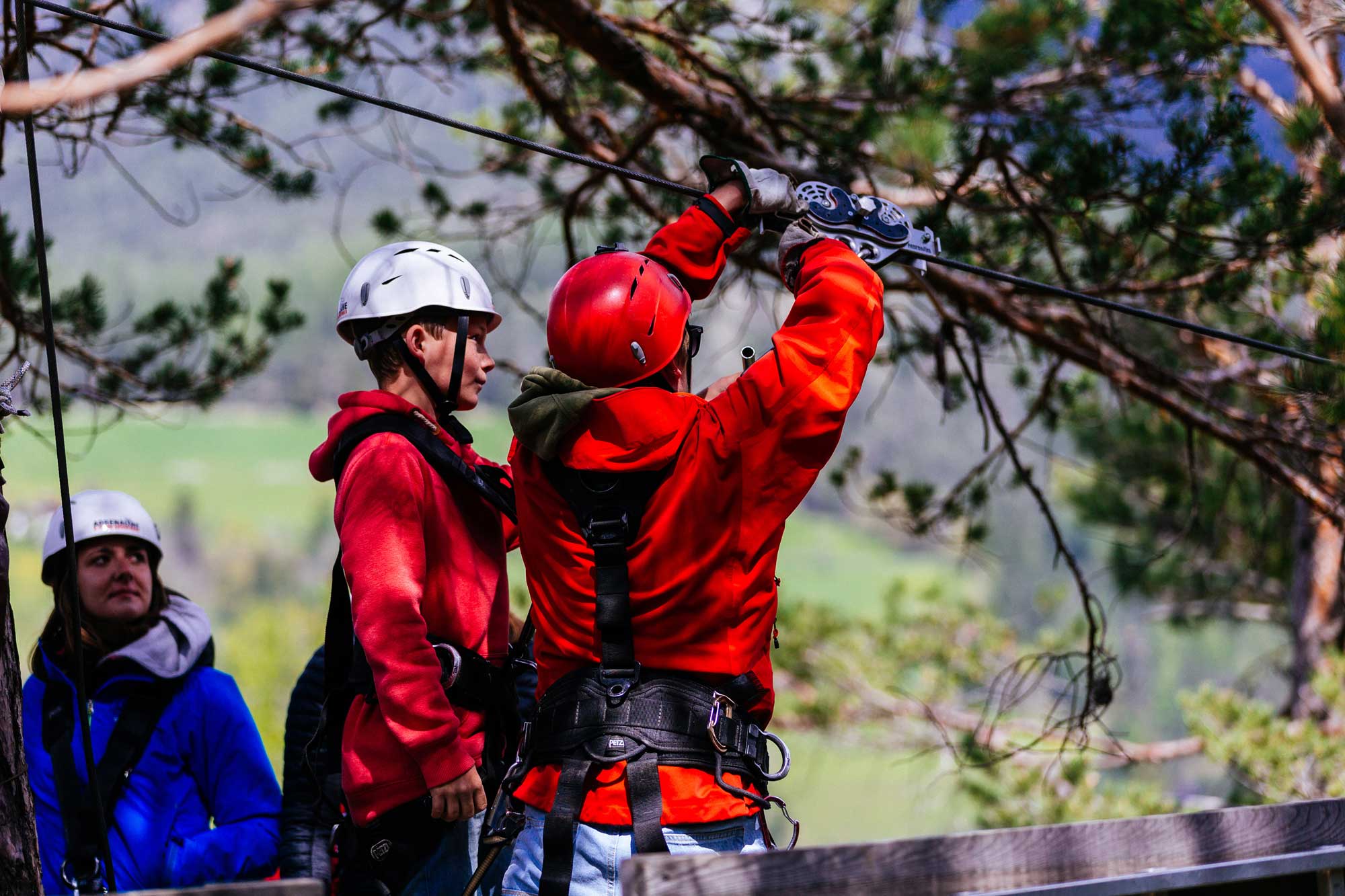
While the zip line can be an exciting and adventurous experience, safety should always be a top priority for those organising and operating the attraction. Safety should never be compromised in the name of adrenaline.
For this reason, facilities offering the zip line experience must comply with strict CE safety regulations. These regulations define the minimum requirements for the design, construction and maintenance of facilities for high-risk activities, such as the zip line.
Furthermore, the technologies used for the zip line should be the most advanced available on the market. This includes equipment such as the harness, pulley, steel rope and anchoring system. All these components must be tested and certified to ensure the safety of users.
Infine, gli operatori della zip line devono essere addestrati e qualificati per eseguire correttamente tutte le fasi della preparazione e della gestione dell’attività, in modo da garantire un’esperienza sicura per gli utenti.
An experience for all
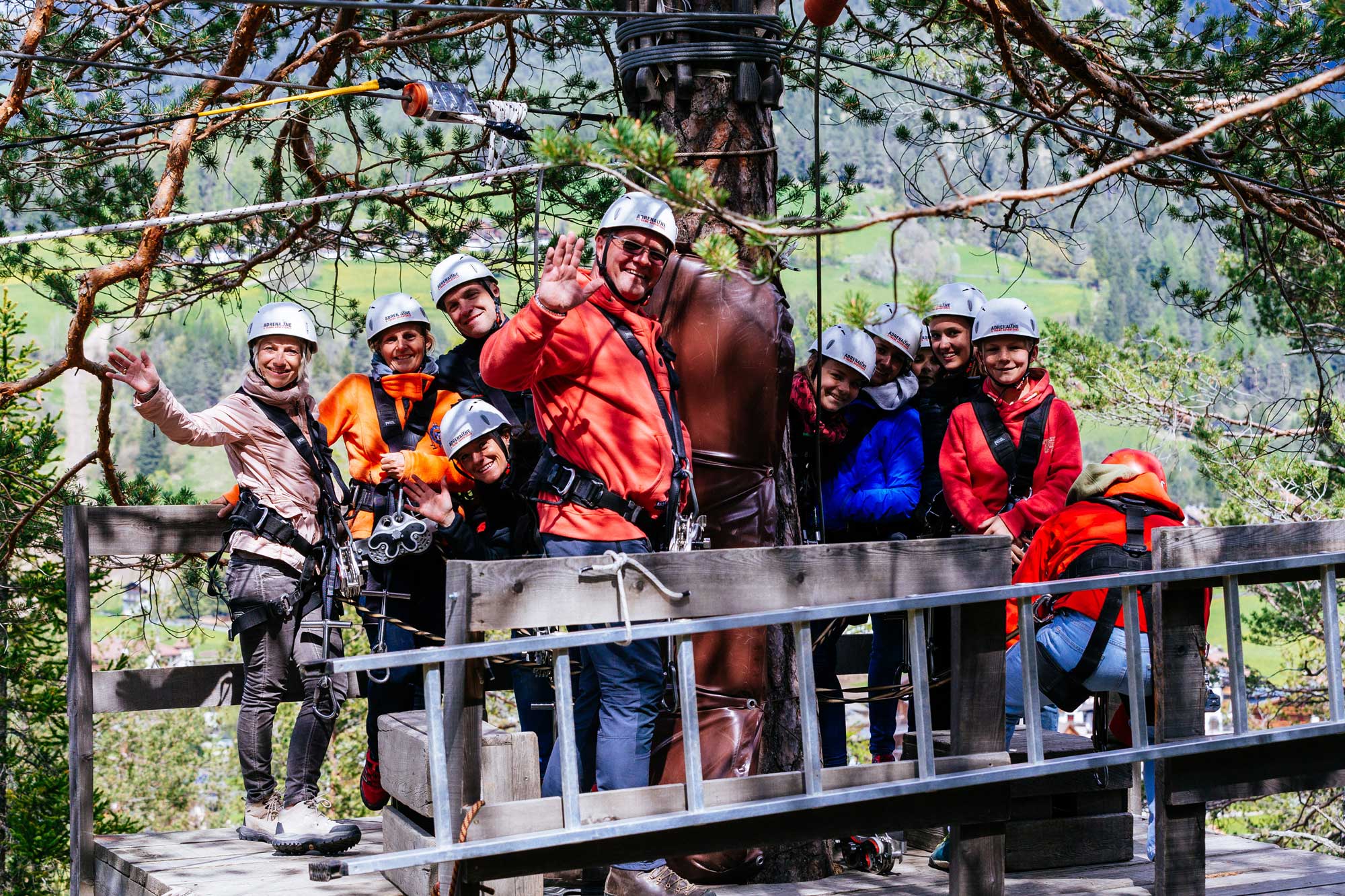
The zip line can be an exciting experience for everyone, children and adults alike. However, there are some age and weight restrictions to ensure the safety of users.
Usually, most operators of zip line facilities require children to be at least 6 or 7 years old and weigh at least 20 kg to participate in the activity. In addition, children under the age of 12 usually have to be accompanied by an adult during the descent.
For adults, on the other hand, there are no particular restrictions, but it is always important to check with the facility manager what requirements are necessary to participate in the activity.
What types of flight exist
There are usually three types of flight that can be offered in a Zipline:
Standard flight
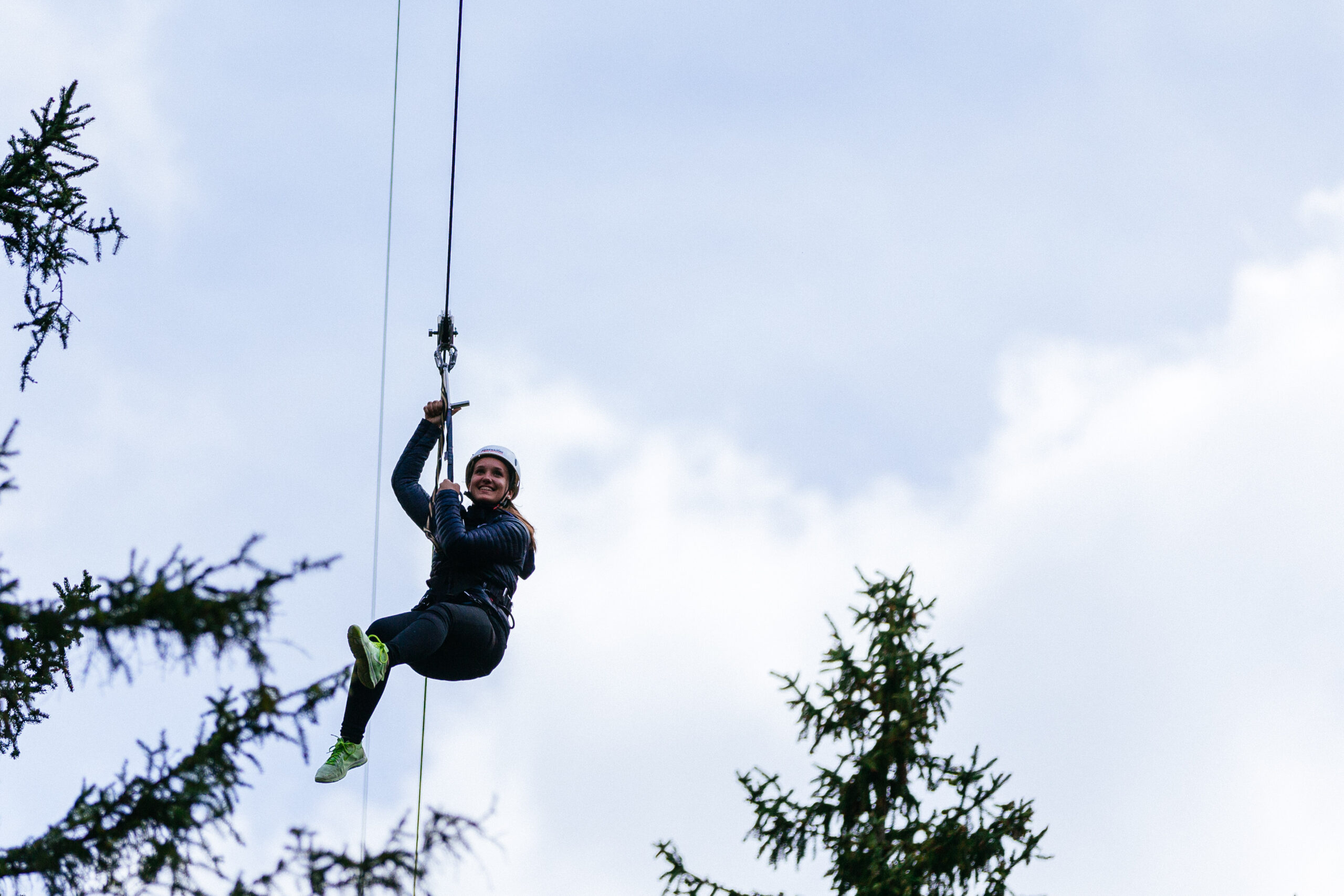
Standard flight: in which the person glides along the cable in an upright position, with legs slightly apart and arms slightly open to maintain balance.
Seated flight
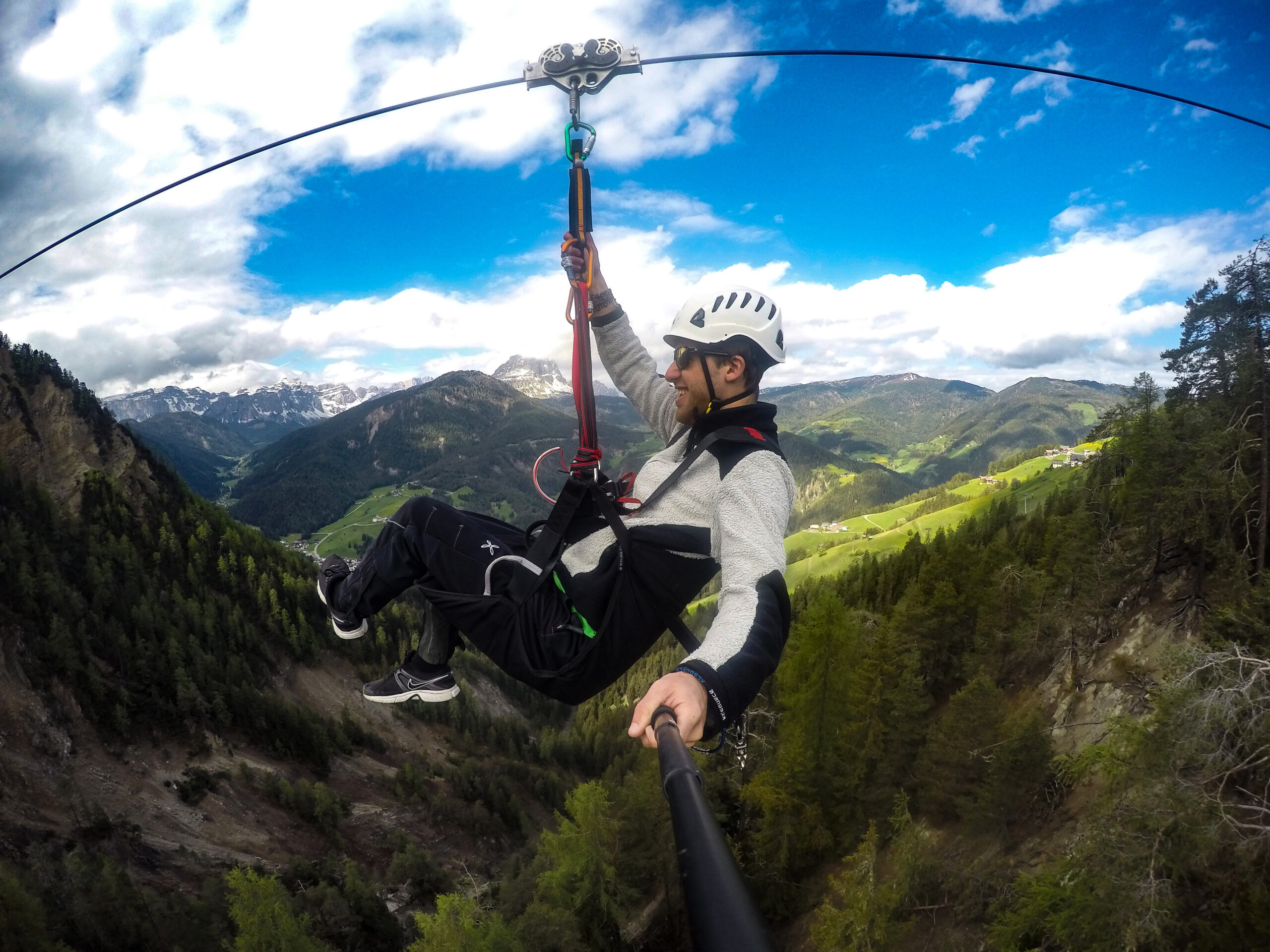
Seated flight: in which the person sits on a safety device attached to the cable and slides down the cable with their legs dangling.
Horizontal flight
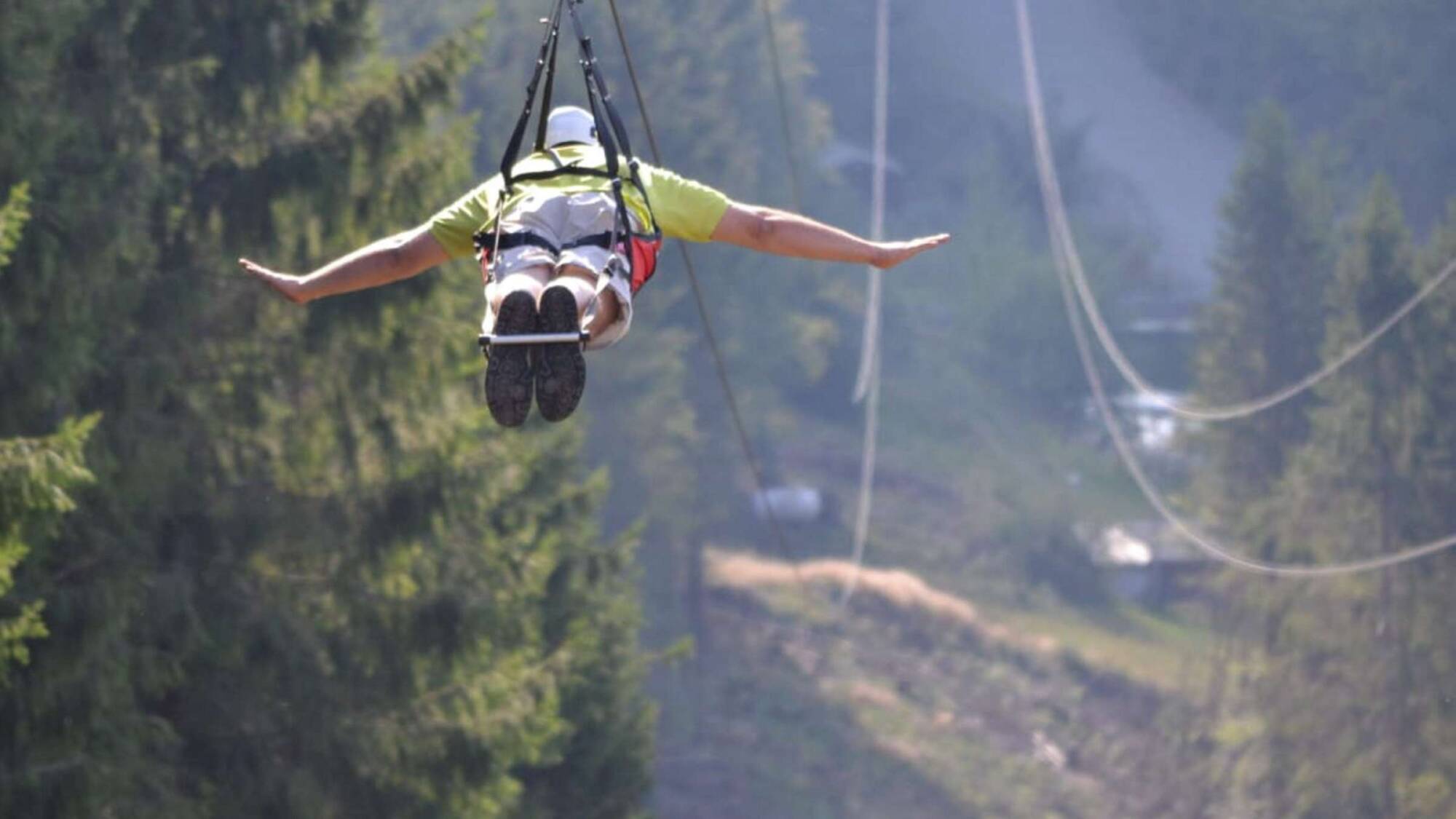
Horizontal flight: in which the person is attached to the cable with a harness system and glides along the cable in a horizontal position, as if flying.
How should I dress?
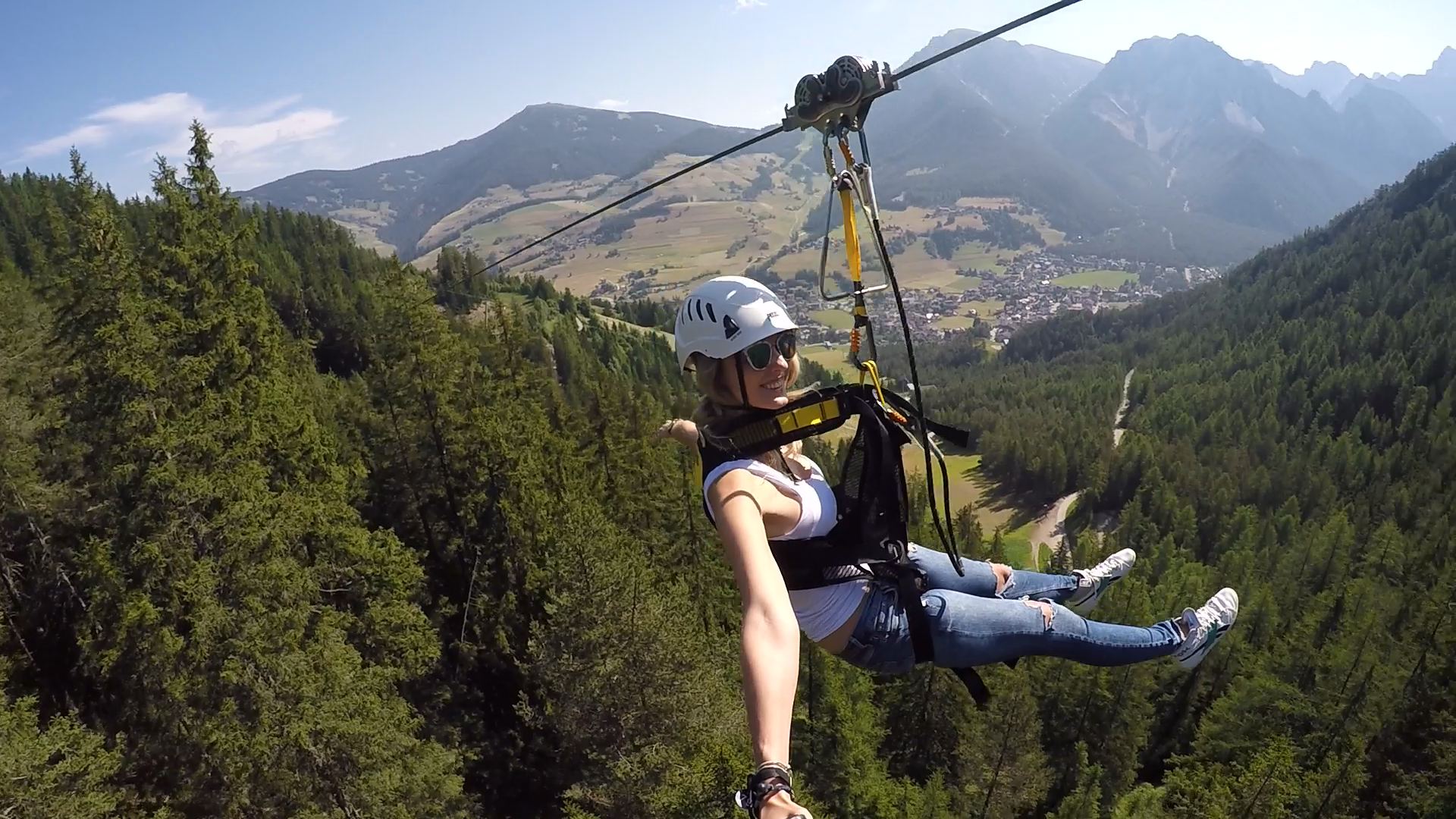
To do the zip line, it is important to dress appropriately and comfortably. Here are some tips on how to dress:
- Wear long, comfortable trousers, preferably in stretch or hard-wearing fabrics to allow more freedom of movement.
- Choose a light, breathable t-shirt or shirt to be comfortable even in hot weather.
- Wear closed shoes, preferably hiking shoes, with a non-slip sole and a good grip to ensure maximum safety during the descent.
- If necessary, wear a jacket or windbreaker to protect yourself from the wind or cold.
In general, it is important to dress appropriately for the area and weather conditions to ensure maximum comfort and safety during the descent. In any case, the staff running the attraction can provide further advice on how to dress according to local conditions and zip line experience.
What if it rains?
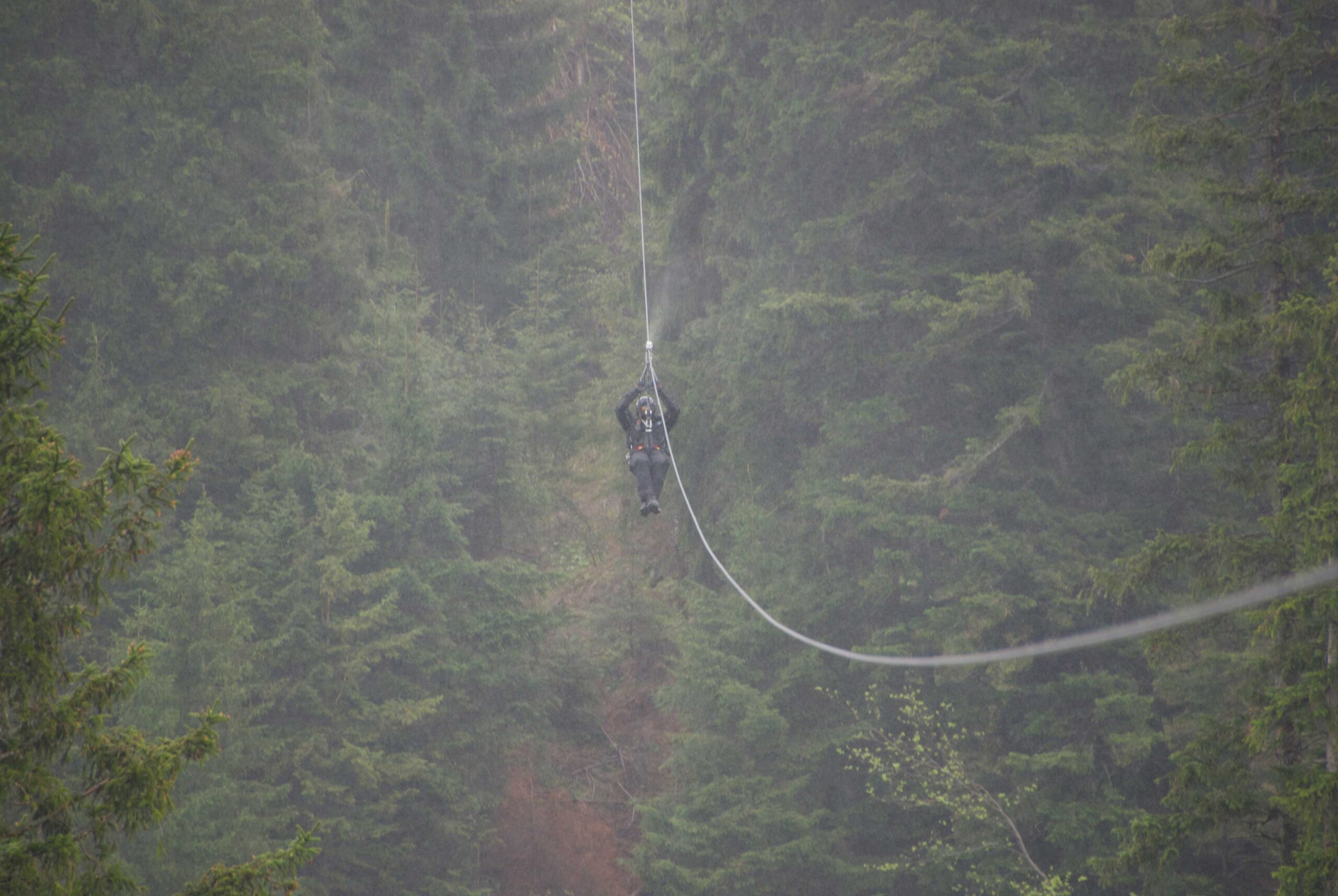
the zip line may not be interrupted in the event of light or moderate rain, but only in the event of thunderstorms or other extreme weather conditions that could pose a risk to the safety of the user. In any case, the final decision is the responsibility of the attraction staff, who will evaluate the weather conditions and the safety level of the activity.
However, it is always advisable to check the weather conditions before booking the zip line experience and to check the attraction’s policies in case of adverse weather conditions. In case of uncertainty or doubt about the safety of the activity, it is always best to ask the attraction staff for information or postpone the experience to another date.
In conclusion
In conclusion, the zip line is an adrenaline and adventure-packed experience that is also safe and suitable for people of all ages and fitness levels. Thanks to its ancient history and continuous innovations, the zip line has become a popular outdoor sports and tourist attraction, allowing participants to enjoy a unique and unforgettable experience.
The zip line offers an adventurous and unforgettable experience for those who are seeking to challenge themselves and overcome their fears. Whether crossing a rainforest or flying over a city, the zip line is an experience that will leave a lasting impression in the memory of those who experience it.
If you have had an exciting zip line experience, please share it with blog readers to inspire and help others have an unforgettable adventure!
